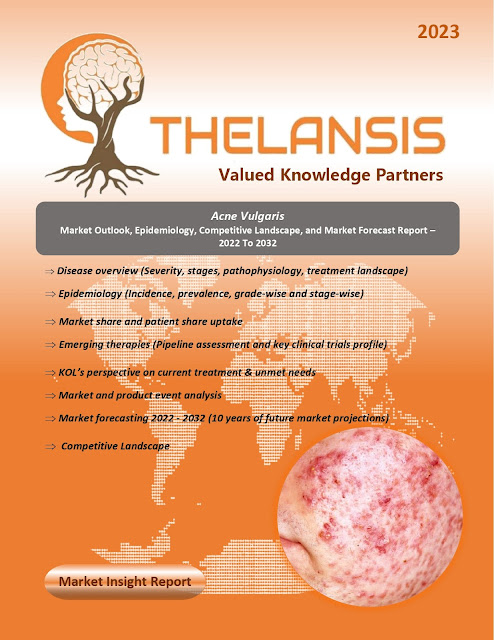Deep Venous Thrombosis (DVT) – Market Outlook, Epidemiology, Competitive Landscape, and Market Forecast Report – 2022 To 2032
Deep Venous Thrombosis (DVT) is a pathological condition characterized by the obstruction of veins due to hindered venous reflux. It predominantly affects the lower limb venous system, originating from clot formation in a deep calf vein and extending proximally. DVT and venous thromboembolism (VTE) significantly contribute to cardiovascular disease mortality, ranking third after heart attacks and strokes. Various risk factors contribute to the development of DVT, including reduced blood flow, increased venous pressure, mechanical injury to the vein, and elevated blood viscosity. Established causes of DVT and VTE include obesity, pregnancy, advanced age (above 60), surgery, critical care admission, dehydration, and cancer. According to Virchow's triad, the main pathophysiological mechanisms involved in DVT are damage to the vessel wall, blood flow turbulence, and hypercoagulability. Deep veins, as categorized by the Clinical-Etiology-Anatomy-Pathophysiology (CEAP) classification, include the inferior vena cava, common iliac, internal and external iliac, pelvic veins (including gonadal and broad ligament veins), common femoral, deep femoral vein, femoral, popliteal, paired crural veins of anterior and posterior tibial and peroneal, and muscular veins of gastrocnemial and soleal. The severity of DVT is classified into provoked and unprovoked cases. Provoked DVT occurs due to acquired conditions such as surgery, oral contraceptive use, trauma, immobility, obesity, and cancer. Unprovoked DVT has idiopathic or endogenous causes and carries a higher risk of recurrence if anticoagulation treatment is discontinued. DVT can be further categorized as proximal (above the knee, affecting the femoral or iliofemoral veins) or distal (below the knee). The primary complications associated with DVT are pulmonary embolism (including paradoxical emboli in the presence of an atrial septal defect), post-thrombotic syndrome, and bleeding from anticoagulant medications.
·
In the United States, over 200,000 individuals
develop venous thrombosis annually, with approximately 50,000 cases complicated
by pulmonary embolism.
·
Venous thromboembolism, encompassing DVT and
pulmonary embolism, occurs in approximately 1 to 2 individuals per 1000
annually in the United States, corresponding to an estimated 300,000 to 600,000
events annually.
Thelansis’s “Deep Venous Thrombosis
(DVT) Market Outlook, Epidemiology, Competitive Landscape, and Market Forecast
Report – 2022 To 2032" covers disease overview, epidemiology, drug
utilization, prescription share analysis, competitive landscape, clinical
practice, regulatory landscape, patient share, market uptake, market forecast,
and key market insights under the potential Deep Venous Thrombosis (DVT)
treatment modalities options for eight major markets (USA, Germany, France,
Italy, Spain, UK, Japan, and China).
KOLs insights
of Deep Venous Thrombosis (DVT) across 8 MM market from the centre of
Excellence/ Public/ Private hospitals participated in the study. Insights
around current treatment landscape, epidemiology, clinical characteristics,
future treatment paradigm, and Unmet needs.
Deep Venous Thrombosis (DVT) Market Forecast Patient
Based Forecast Model (MS. Excel Based Automated Dashboard), which Data Inputs
with sourcing, Market Event, and Product Event, Country specific Forecast
Model, Market uptake and patient share uptake, Attribute Analysis, Analog
Analysis, Disease burden, and pricing scenario, Summary, and Insights.
Thelansis Competitive Intelligence (CI) practice
has been established based on a deep understanding of the pharma/biotech
business environment to provide an optimized support system to all levels of
the decision-making process. It enables business leaders in forward-thinking
and proactive decision-making. Thelansis supports scientific and commercial
teams in seamless CI support by creating an AI/ ML-based technology-driven
platform that manages the data flow from primary and secondary sources.
_page-0001.jpg)


%20Market%20Outlook%20and%20Forecast.webp)
Comments
Post a Comment